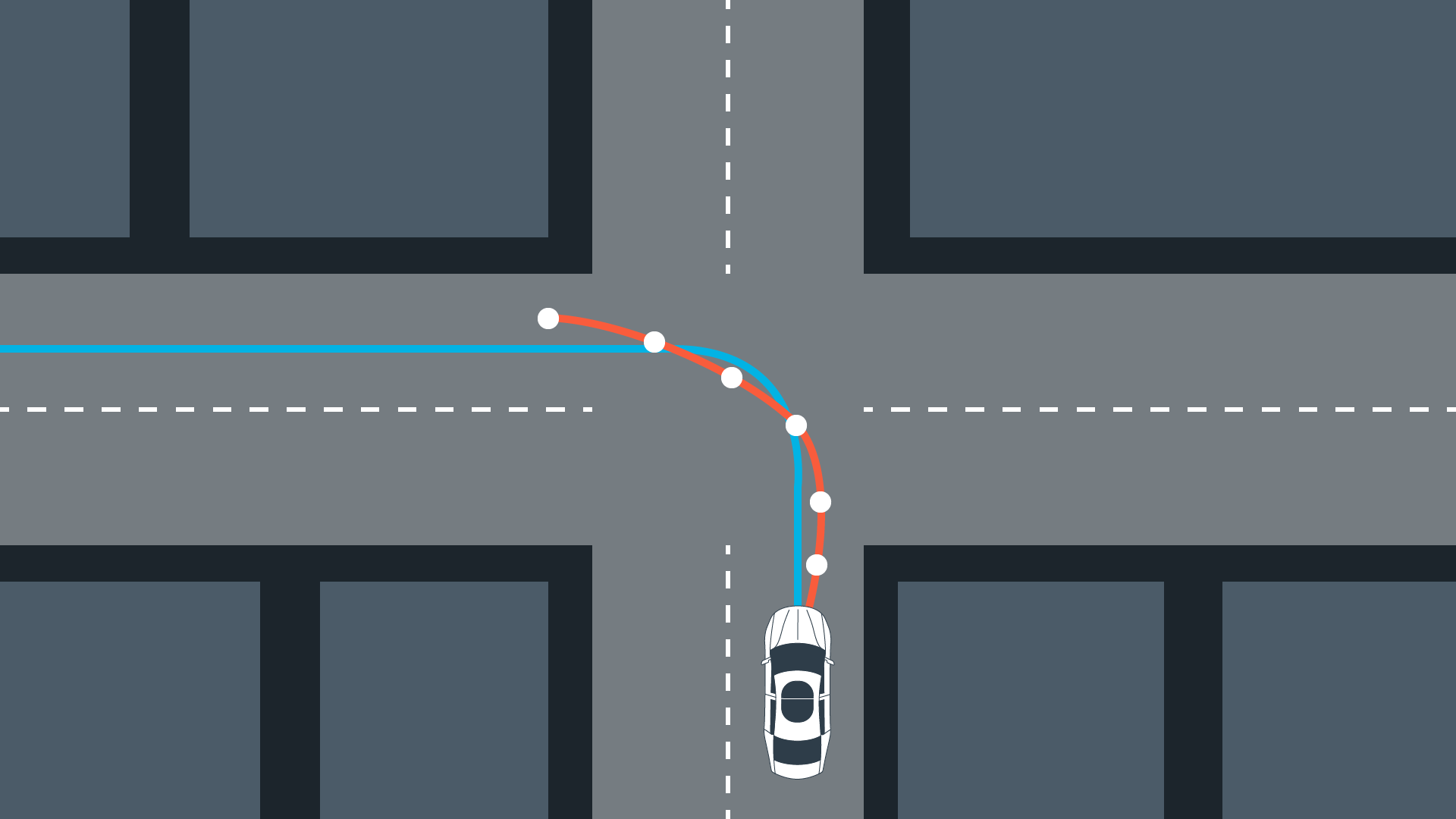05. Length and Duration
The prediction horizon is the duration over which future predictions are made. We’ll refer to this as T .
T is the product of two other variables, N and dt .
N is the number of timesteps in the horizon. dt is how much time elapses between actuations. For example, if N were 20 and dt were 0.5, then T would be 10 seconds.
N , dt , and T are hyperparameters you will need to tune for each model predictive controller you build. However, there are some general guidelines. T should be as large as possible, while dt should be as small as possible.
These guidelines create tradeoffs.
Horizon
In the case of driving a car, T should be a few seconds, at most. Beyond that horizon, the environment will change enough that it won't make sense to predict any further into the future.
Number of Timesteps
The goal of Model Predictive Control is to optimize the control inputs: [\delta, a] . An optimizer will tune these inputs until a low cost vector of control inputs is found. The length of this vector is determined by N :
Thus N determines the number of variables optimized by the MPC. This is also the major driver of computational cost.
Timestep Duration
MPC attempts to approximate a continuous reference trajectory by means of discrete paths between actuations. Larger values of dt result in less frequent actuations, which makes it harder to accurately approximate a continuous reference trajectory. This is sometimes called "discretization error".
A good approach to setting N , dt , and T is to first determine a reasonable range for T and then tune dt and N appropriately, keeping the effect of each in mind.

The blue line is the reference trajectory and the red line the trajectory computed by Model Predictive Control . In this example the horizon has 7 steps, N , and the space in between white pebbles signifies the time elapsed, dt .